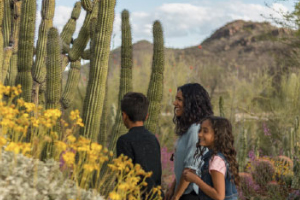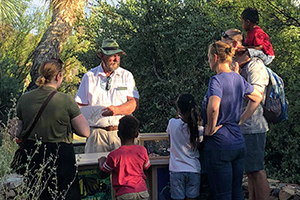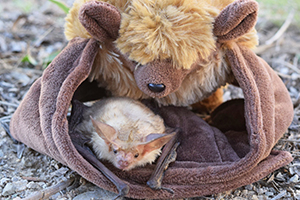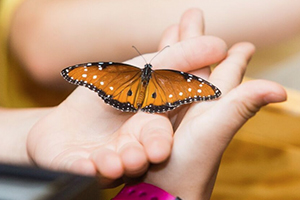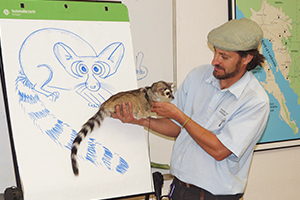The Problem with Weeds
When we talk about weeds, we don’t mean just any unwanted plant. The weeds we are concerned about are non-native, invasive plants that can bring about widespread unwanted changes to our Sonoran Desert home. These are plants that can spread explosively, decreasing biodiversity, fueling wildfires, and hurting the livelihoods of people who work in tourism and agriculture.
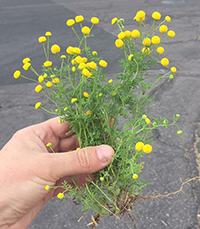
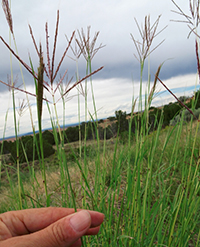
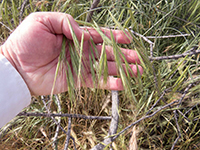
What can be done?
The most effective way to fight invasive plants is to tackle them when they are new to an area and are still relatively rare. By the time a new invasive plant is common enough to be perceived as a problem, it will often be too late for it to be easily eradicated. Early detection and rapid response (EDRR) is the most effective approach to managing new invasive species.
This means we need lots of eyes on the ground to detect new invasive plants before they become established (i.e. early detection) so that land managers have a chance to respond quickly (i.e. rapid response).
With this Community Weed Mapping project we hope to increase early detection to help land managers in Pima County through a network of weed mapping volunteers. Although local land managers may have a good grasp of what is going on in the land under their care, they often are less aware of invasive plants emerging in neighboring areas.
We will be training community members to identify new, potentially invasive new weeds and report them to a new national online database for sharing invasive species information. By helping us increase early detection of new invasive plants in our areas, volunteers will give our local land managers a leg up in their work to protect the biodiversity of the lands under their care.
How can I become a Weed Mapper?
- Download the Wild Spotter app from wherever you get your apps. This video will walk you through getting started if you need extra help.
- Select Arizona-Sonora Desert Museum Community Weed Mapping Project as your Wild Place.
- Go exploring and report what you find to our project!
Frequently Asked Questions
- No! Take more photos if you are not sure about a plant, but don’t skip a report;
- One of the advantages of submitting a Weed Mapping report is that you will get to practice your plant identification skills. Don’t worry about messing up the database. All reports will be screened by expert invasive species verifiers and only the confirmed ones will be accepted into the database;
- Sometimes one of the verifiers will reach out to a mapper if a report is unclear of a photo is fuzzy.
- Reports submitted to the Weed Mapping project are added to the EDDmapS database;
- EDDMapS is currently the largest invasive species data aggregator in North America and is one of the data sources for the National EDRR Framework;
- In addition to the National EDRR Framework, local land managers can also subscribe to receive alerts for new infestations of EDRR species in areas under their care.
- We chose the Wild Spotter app over other options because it is the easiest to use and requires very little training for new mappers;
- However, this app was indeed originally developed to be used by casual visitors in National Forests and other wild places. Don’t worry, we have found that Wild Spotter can be easily expanded to map our EDRR species anywhere in Pima County and even beyond.
- One of the challenges of this project is that we are focusing on invasive plants that are less common in our area. In some cases, even local invasive species experts may have a hard time spotting some of these weeds;
- One option is to look up places on EDDmapS where an EDRR species has been mapped in the past and try visiting it to see if you can find it;
- We plan to hold in-person identification classes over the year as different EDRR species cycle through the seasons when they are easiest to identify. Sign up for our mailing list to be notified when they take place.
- Buffelgrass is most definitely an invasive plant of concern in Pima County. However, it is already far too established to be considered an Early Detection and Rapid Response species;
- Most local land managers already know that there is buffelgrass in their area and a report of a new infestation, although useful, will rarely trigger a rapid response;
- If you wish to map buffelgrass, you can do so using the EDDMapS app. We’ll be happy to show you how if you reach out to us;
- Once your report has been checked by an expert invasive species verifier, it will be added to the EDDmapS database and shared with the public;
- To visualize EDDMapS reports on a map, you can use the EDDmapS Advanced Query Tool.
- You can also log into the EDDMapS.org site with your Wild Spotter login ID to pull up a list of all the invasive species reports you have submitted.
- We have organized some online help sessions to troubleshoot and help people get started in our Weed Mapping project. Check for upcoming Weed Mapping events here;
- As different species of invasive plants come into season, we will also hold some in-person field events to help people learn to map and identify some of our EDRR watchlist species;
- You can also reach out to us directly at WeedMapping@desertmuseum.org;
- You can download an offline map that allows you to report data to the Weed Mapping project area even if without an internet connection;
- This video helps guide you through the steps.
- Yes! You can report invasive species on the www.EDDMapS.org website even if you don’t have a phone or tablet with the app. However, you will still need a digital photo of what you are mapping for the report to be verified and accepted;
- Here are instructions for how to map from your computer;
- Only remove invasive plants if:
- Your report has been verified to prove that your identification is correct;
- You have permission from the owner or manager of the property to do so;
- You know how to remove the plant safely and effectively (some plants require PPE and some can grow back bigger if you don’t know how to remove it correctly);
- To report your treatment, you will have to use www.eddmaps.org on a computer or a different app like the EDDMapS app or the EDDMapS Pro app. They all connect to the same database as Wild Spotter but are slightly more complicated to use. There are instructions online on the EDDMapS training page or you can reach out to us at WeedMapping@desertmuseum.org if you need more help;
Prevention is Key
The longer that an invasive species spreads in a new environment, the harder and more expensive it is to manage. The Early Detection and Rapid Response model promotes prevention to manage costs and preserve the native ecosystem.
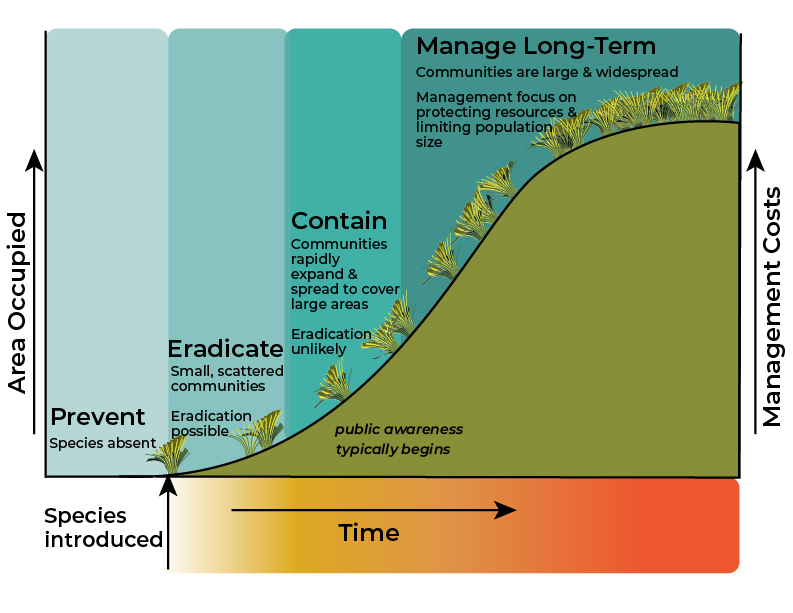
Figure 1. The invasion curve. Adapted from Invasive Plants and Animals Policy Framework, State of Victoria, Department of Primary Industries, 2010 (https://edis.ifas.ufl.edu/publication/UW392).
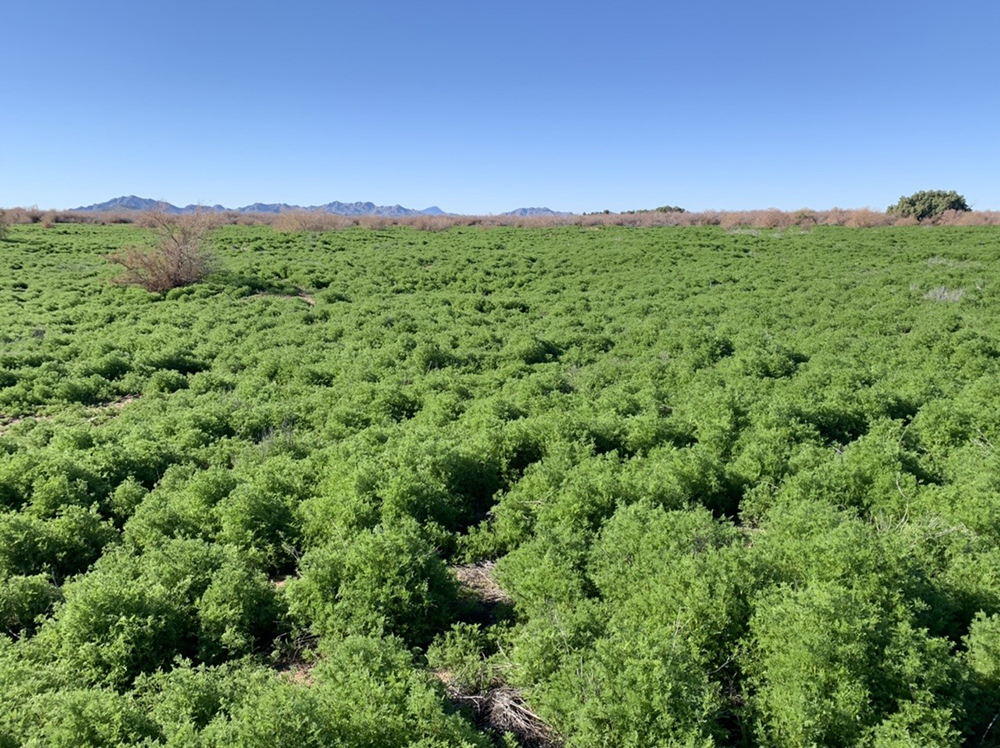
Weed Calendar
Different invasive weeds are easier to spot and remove at certain times of the year. Reference this species calendar to find out which species you can look out for right now!

